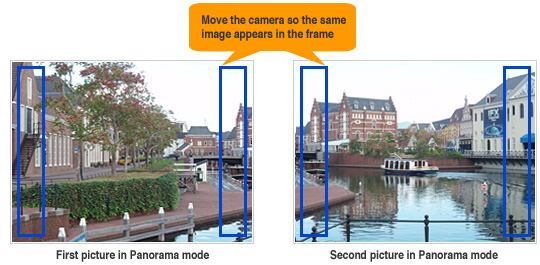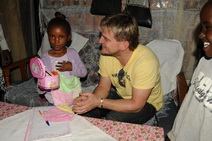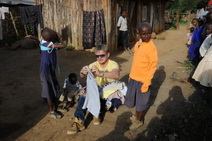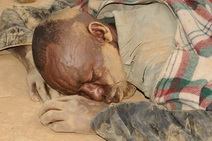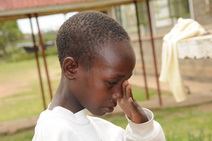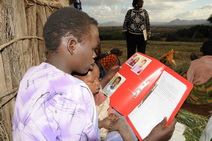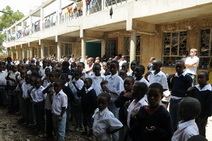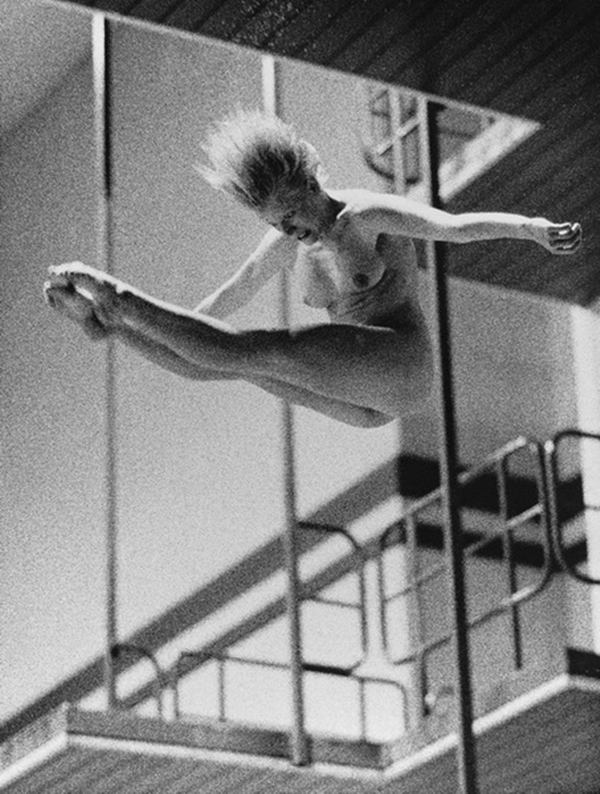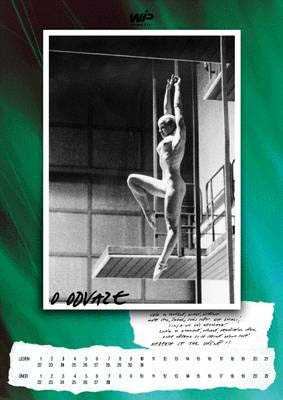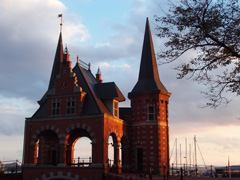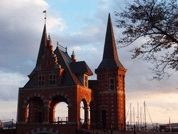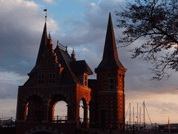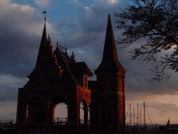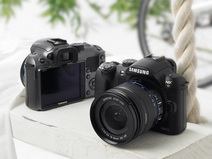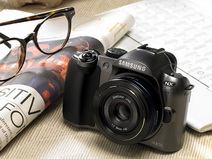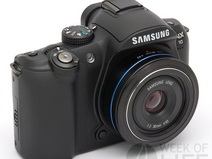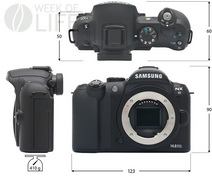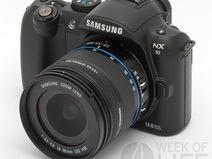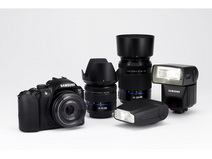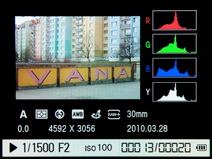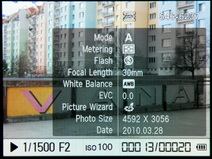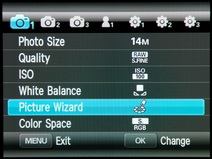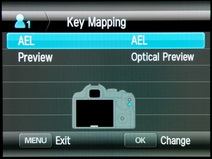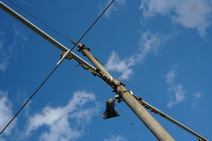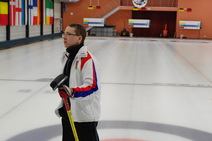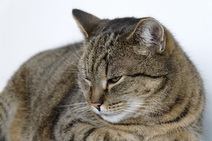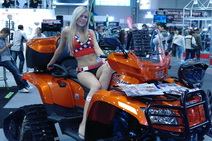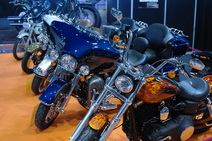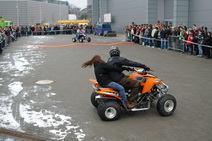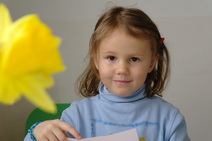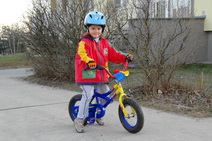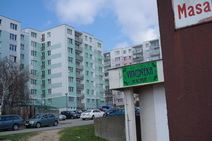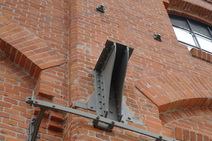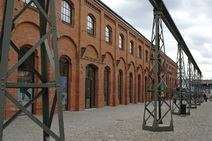Juraj Sucharda, Obchodník, Slovensko
 Rád bych se na začátku k něčemu přiznal. Jsem asi lehce přecitlivělý, miluju děti, mám rád dětský svět a jejich radosti i starosti mě dojímají. Jsem rád, když jsem jeho součástí a mohu si na chvilku oddechnout od toho světa dospělého, v jistém smyslu pokřiveného a zmateného. Když mě Jura Sucharda kontaktoval s možností uveřejnění reportáže „Stal som pred branou neba“, tak jsem měl smíšené pocity. Nevěděl jsem, zda se takové téma pro Week of Life hodí. Nicméně jsem předběžně potvrdil zájem. Pak mi Jura poslal první záběry, ze kterých jsem jako první spatřil fotografii, na které lidská ruka drží ručičku človíčka, který místo toho, aby si užíval první radosti ze života, tak prožívá svůj první velký boj. Ještě TO ani nezačalo a už TO může skončit. Ten snímek na mě velice zapůsobil a v tu chvilku jsem si uvědomil, že tato reportáž by měla mít speciální místo na stránkách Week of Life. Až mnohem později jsem si přečetl neméně důležitý text, ale úkol fotografie a její síla a dopad na vnitřní napětí jedince sehráli v tomto případě významnou roli. Adolf Zika
Rád bych se na začátku k něčemu přiznal. Jsem asi lehce přecitlivělý, miluju děti, mám rád dětský svět a jejich radosti i starosti mě dojímají. Jsem rád, když jsem jeho součástí a mohu si na chvilku oddechnout od toho světa dospělého, v jistém smyslu pokřiveného a zmateného. Když mě Jura Sucharda kontaktoval s možností uveřejnění reportáže „Stal som pred branou neba“, tak jsem měl smíšené pocity. Nevěděl jsem, zda se takové téma pro Week of Life hodí. Nicméně jsem předběžně potvrdil zájem. Pak mi Jura poslal první záběry, ze kterých jsem jako první spatřil fotografii, na které lidská ruka drží ručičku človíčka, který místo toho, aby si užíval první radosti ze života, tak prožívá svůj první velký boj. Ještě TO ani nezačalo a už TO může skončit. Ten snímek na mě velice zapůsobil a v tu chvilku jsem si uvědomil, že tato reportáž by měla mít speciální místo na stránkách Week of Life. Až mnohem později jsem si přečetl neméně důležitý text, ale úkol fotografie a její síla a dopad na vnitřní napětí jedince sehráli v tomto případě významnou roli. Adolf Zika
Neonatológia je subšpecializácia (pododbor) pediatrie realizujúci medickú starostlivosť o novorodencov, špeciálne o chore alebo nedonosené deti.
 Stál som pred bránou neba… niekto vošiel dnu a iný zase zostúpil „na Zem“. Som otcom dvoch krásnych a zdravých dcér. Dôverne poznám stiesnený pocit vysokých teplôt a hoci by sa tých pár prebdených nocí dalo spočítať na prstoch dvoch rúk, zrazu vidím svet z druhej strany. Podávam ruku lekárovi – pravej ruke Boha. Z jeho očí srší neuveriteľná energia a odhodlanie. Vchádzam na oddelenie intezívnej neonatológie. MUDr. Krcho, prednosta oddelenia (pracujúci v tomto odbore od r.1989), začína popri práci svoje rozprávanie o ľuďoch, starostiach, možnostiach i útrapách a zložitosti systému.
Stál som pred bránou neba… niekto vošiel dnu a iný zase zostúpil „na Zem“. Som otcom dvoch krásnych a zdravých dcér. Dôverne poznám stiesnený pocit vysokých teplôt a hoci by sa tých pár prebdených nocí dalo spočítať na prstoch dvoch rúk, zrazu vidím svet z druhej strany. Podávam ruku lekárovi – pravej ruke Boha. Z jeho očí srší neuveriteľná energia a odhodlanie. Vchádzam na oddelenie intezívnej neonatológie. MUDr. Krcho, prednosta oddelenia (pracujúci v tomto odbore od r.1989), začína popri práci svoje rozprávanie o ľuďoch, starostiach, možnostiach i útrapách a zložitosti systému.
Na oddelení pracuje tím pozostávajúci z 10 lekárov a 38 sestier, ktorí sa striedajú v štyroch smenách na dvoch oddeleniach. Sú schopné prijať 20-24 novorodencov v ohrození života. Po ich príchode a komplexných vyšetreniach potrebných na ich záchranu sa boj len začína. Počiatočné úkony pri prijatí dieťaťa na oddelenie rozhodnú nie len o jeho ďalšom stave, ale aj možných trvalých následkoch. Mnoho rodičov si ale kritický stav svojho dieťaťka nepripúšťa, napríklad pri vážnom poškodení mozgu, a v 80% žiadajú od lekárov zázraky a neuvedomujú si, že život tohto dieťaťa, ako aj jeho rodiny, bude poznačený nevyliečiteľnými následkami. Pri takej predstave mi behá po chrbte mráz a naozaj neviem ako by som reagoval v skutočnosti ja sám… Pobyt nedonoseného, ako aj rizikového novorodenca, je od dvoch týždňov až do štyroch mesiacov, závisi však od množstva faktorov.. Dieťa vážiace 2000g si už (samozrejme ak to celkový zdravotný stav dovoľuje) rodičia môžu vziať domov… Po prepustení sú detičky sledované odborníkmi v rôznych špecializovaných poradniach, sú pod dohľadom očných lekárov, ortopédov, kardiológov až po neurológov a nefrológov, no najväčší kus práce a rozhodujúcich krokov sa udeje práve na neonatológii…
„Som svedkom zázraku, keď bábätko narodené v 27. týždni nesie veľké posolstvo pre svet už len tým, že tu ostáva.“
Predčasný pôrod je ovplyvnený príliš nízkym alebo príliš vysokým vekom budúcej matky, ale istým spôsobom môže byť hrozbou aj umelé oplodnenie, pri ktorom vo väčšine prípadov hrozí viacpočetná tehotnosť. Alkohol, cigarety, drogy, nesprávna životospráva, no niekedy aj psychické problémy, cukrovka, vírusové ochorenia a ochorenia maternice zvyšujú toto riziko. V neposlednom rade sa počet rizikovo gravidných zvyšuje aj vďaka už spomínaným pokrokom medicíny: rodiť dnes môžu aj ženy, ktoré v minulosti nemali žiadnu šancu otehotnieť alebo donosiť dieťa.
 MUDr. Krcho pristupuje k niekoľkohodinovému dievčatku 16 ročnej matky a ja v nemom úžase sledujem to malilinké stvorenie sotva väčšie od mojich dlaní a hoci je napojené na hadičky, no s odhodlaním bojovať. Sledujem organizovanú tímovú prácu kolektívu, akoby vykonávali bežnú údržbu domácnosti. Sú kľudní, vyrovnaní a takí silní… Všetko má presné pravidlá a postupy. Som svedkom zázraku, keď bábätko narodené v 27. týždni nesie veľké posolstvo pre svet už len tým, že tu ostáva. „Srdiečko nabieha, tlak sa stabilizuje, vracia sa farba“…. Odstránený zvyšok pupočnej šnúry a následne zavedenie dvoch katétrov cez tepnu a žilu v pupočníku rovno do srdiečka na zavádzanie výživy a liekov zabezpečí na začiatok tomuto dieťaťu všetko potrebné. …postavi sa a… „hotovo“ a ja mám pocit mierneho náznaku úsmevu. Ale je to len začiatok. Nastať môžu rôzne komplikácie, od roznych infekcií, cez septické stavy, až po krvácanie do mozgu. Doktor Krcho ma ďalej oboznamuje s procesom práce. Sledujem sestričky ako menia deťom obrie plienky, kontrolujú parametre na prístrojoch, s akou láskou berú so všetkými tými hadičkami bábätká ich matky na svoju hruď. Ktovie čo tým drobcom beží hlavou.. a čo matkám! Veď po ťažkom boji môžu konečne pohladiť svoj najväčší poklad. A čo otcovia? Prežíval som pôrod so svojou manželkou a hrozne som sa bál, ale tento nápor vydržať chce asi nobelovu cenu. Podporovať ženu – matku a nezlyhať. Veriť lekárom aj dieťatku. A pri tom všetkom sa nezblázniť.
MUDr. Krcho pristupuje k niekoľkohodinovému dievčatku 16 ročnej matky a ja v nemom úžase sledujem to malilinké stvorenie sotva väčšie od mojich dlaní a hoci je napojené na hadičky, no s odhodlaním bojovať. Sledujem organizovanú tímovú prácu kolektívu, akoby vykonávali bežnú údržbu domácnosti. Sú kľudní, vyrovnaní a takí silní… Všetko má presné pravidlá a postupy. Som svedkom zázraku, keď bábätko narodené v 27. týždni nesie veľké posolstvo pre svet už len tým, že tu ostáva. „Srdiečko nabieha, tlak sa stabilizuje, vracia sa farba“…. Odstránený zvyšok pupočnej šnúry a následne zavedenie dvoch katétrov cez tepnu a žilu v pupočníku rovno do srdiečka na zavádzanie výživy a liekov zabezpečí na začiatok tomuto dieťaťu všetko potrebné. …postavi sa a… „hotovo“ a ja mám pocit mierneho náznaku úsmevu. Ale je to len začiatok. Nastať môžu rôzne komplikácie, od roznych infekcií, cez septické stavy, až po krvácanie do mozgu. Doktor Krcho ma ďalej oboznamuje s procesom práce. Sledujem sestričky ako menia deťom obrie plienky, kontrolujú parametre na prístrojoch, s akou láskou berú so všetkými tými hadičkami bábätká ich matky na svoju hruď. Ktovie čo tým drobcom beží hlavou.. a čo matkám! Veď po ťažkom boji môžu konečne pohladiť svoj najväčší poklad. A čo otcovia? Prežíval som pôrod so svojou manželkou a hrozne som sa bál, ale tento nápor vydržať chce asi nobelovu cenu. Podporovať ženu – matku a nezlyhať. Veriť lekárom aj dieťatku. A pri tom všetkom sa nezblázniť.
 Prístroje, nástroje, hadičky, prísne pravidlá, teplota, vlhkosť a… nádherné papučky pletené sestričkami pre tieto bezbranné stvorenia. Dozvedám sa o nedostatku prístrojov a peňazí, o potrebe ľudí s veľkým srdcom a zanietenosťou. O ťažkých chvíľach a rozhodnutiach pri záchrane bezbranných uzlíčkov, čo prišli nedočkavo na svet, ktoré rozdelia babätká na tie, čo rozšíria rady anjelov tam Hore a tie, ktoré ostanú na zemi.
Prístroje, nástroje, hadičky, prísne pravidlá, teplota, vlhkosť a… nádherné papučky pletené sestričkami pre tieto bezbranné stvorenia. Dozvedám sa o nedostatku prístrojov a peňazí, o potrebe ľudí s veľkým srdcom a zanietenosťou. O ťažkých chvíľach a rozhodnutiach pri záchrane bezbranných uzlíčkov, čo prišli nedočkavo na svet, ktoré rozdelia babätká na tie, čo rozšíria rady anjelov tam Hore a tie, ktoré ostanú na zemi.
„Ruky – ako nástroje Boha, pomáhajú, zachraňujú, hladia, pracujú…“
Ruky – ako nástroje Boha, pomáhajú, zachraňujú, hladia, pracujú… sú šikovné, potrebné a dômyselne vymyslené.
Ruky sestier a lekárov vyzerajú tak nežne a tie veľké dlane hladiace maličkú hlavičku… Ruky týchto ľudí sú navyše pozlátené. So súhlasom Dr. Krcha a rodičov, vám vieme priblížiť aj dôležitosť digitálnej fotografie, ktorá v niektorých prípadoch bola jediným spojením matky s jej predčasne narodeným dieťaťom… Po komplikovanom pôrode mamička zomrela a vďaka maličkému kompaktnému fotoaparátu a rutinnej dokumentácii malých pacientov pre prípad promtnej, často len virtuálnej komunikácie s množstvom ďalších odborníkov, sa mohla mamička aspoň takto na chvíľku stretnúť a zoznámiť so svojim bábätkom.
Oddelenie neonatológie je dôležitou súčasťou nemocnice. Mnoho rodičov ho nepozná a nevie, kým sa tu nedostane so svojím bábom. Dovoľte mi zoznámiť vás s rukami týchto ľudí, s ich prácou, možnosťami i nedostatkami a ukázať Vám silu týchto detí a ich chuť žiť, bojovať a vyhrávať.
Pri otázke či sa Dr. Krcho cíti ako Boh, keď sa mu darí zachraňovat niekedy aj zdanlivo neriešiteľné prípady, mi s vážnou tvárou odpovedá : „Nie. Je to vtedy, keď sa musime rozhodnúť, že šanca na život už nie je a pristroje môžeme vypnúť….
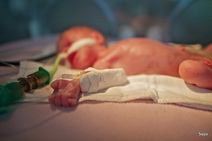 |
 |
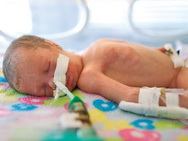 |
 |
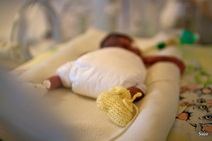 |
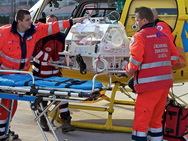 |
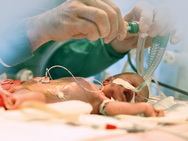 |
 |
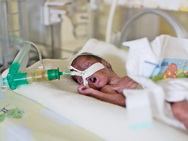 |
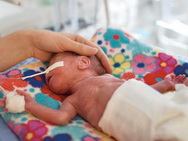 |
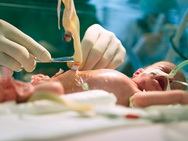 |


